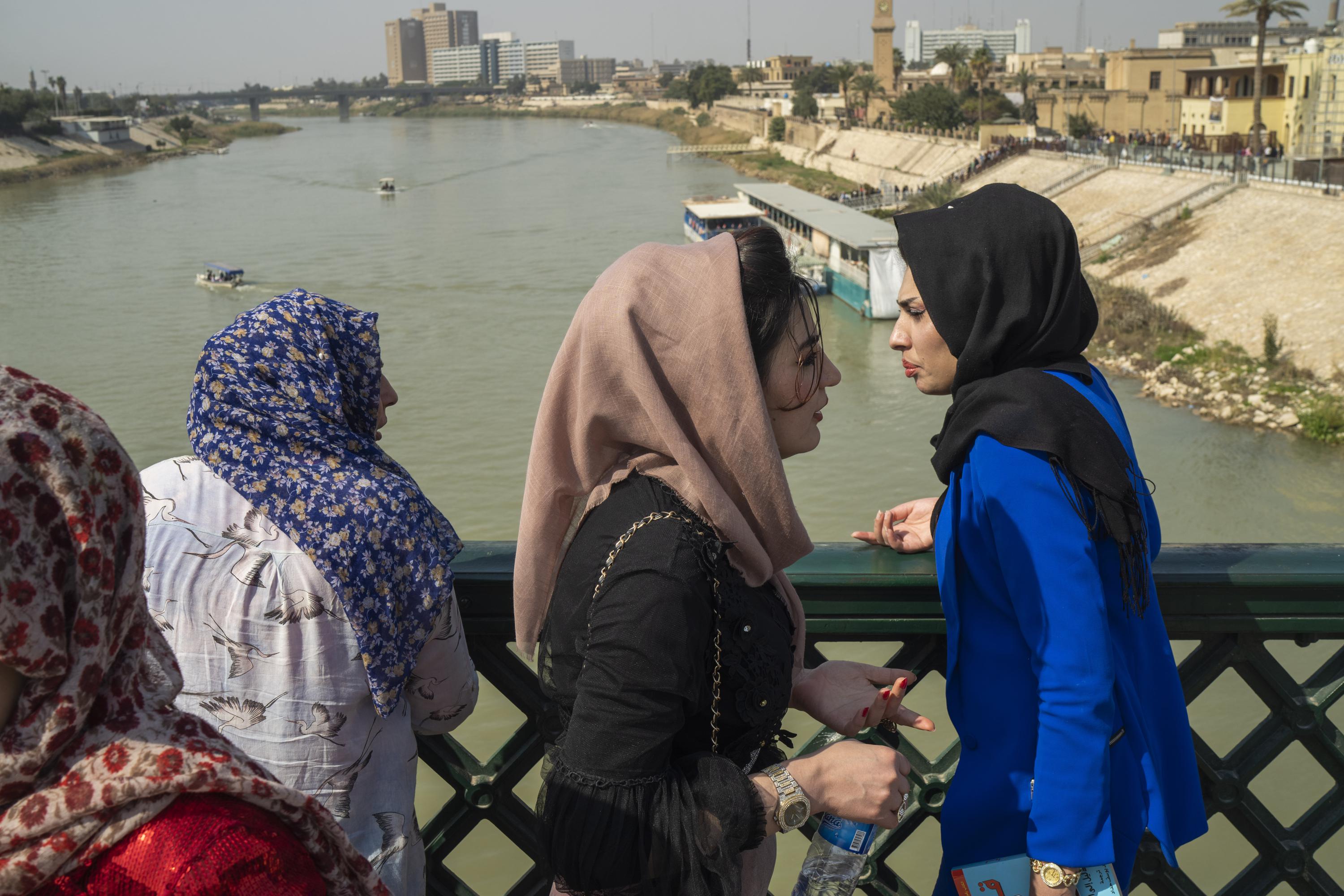
apnews.com
20 years after U.S. invasion, young Iraqis see signs of hope
BAGHDAD (AP) — On the banks of the Tigris River one recent evening, young Iraqi men and women in jeans and sneakers danced with joyous abandon to a local rap star as a vermillion sun set behind them.
International
BAGHDAD (AP) — On the banks of the Tigris River one recent evening, young Iraqi men and women in jeans and sneakers danced with joyous abandon to a local rap star as a vermillion sun set behind them. It’s a world away from the terror that followed the U.S. invasion 20 years ago.
Iraq ’s capital today is throbbing with life and a sense of renewal, its residents enjoying a rare, peaceful interlude in a painful modern history. The wooden stalls of the city’s open-air book market are piled skyward with dusty paperbacks and crammed with shoppers of all ages and incomes. In a suburb once a hotbed of al-Qaida, affluent young men cruise their muscle cars, while a recreational cycling club hosts weekly biking trips to former war zones. A few glitzy buildings sparkle where bombs once fell.
President George W. Bush called the U.S.-led invasion on March 20, 2003, a mission to free the Iraqi people and root out weapons of mass destruction. Saddam Hussein’s government was toppled in 26 days. Two years later, the CIA’s chief weapons inspector reported no stockpiles of nuclear, chemical or biological weapons were ever found.
The war deposed a dictator whose imprisonment, torture and execution of dissenters kept 20 million people in fear for a quarter of a century. But it also broke what had been a unified state at the heart of the Arab world, opening a power vacuum and leaving oil-rich Iraq a wounded nation in the Middle East, ripe for a power struggle among Iran, Arab Gulf states, the United States, terrorist groups and Iraq’s own rival sects and parties.
For Iraqis, the enduring trauma of the violence that followed is undeniable — an estimated 300,000 Iraqis were killed between 2003 and 2019, according to the Watson Institute for International and Public Affairs at Brown University, as were more than 8,000 U.S. military, contractors and civilians. The period was marred by unemployment, dislocation, sectarian violence and terrorism, and years without reliable electricity or other public services.
Today, half of Iraq’s population of 40 million isn’t old enough to remember life under Saddam or much about the U.S. invasion. In dozens of recent interviews from Baghdad to Fallujah, young Iraqis deplored the loss of stability that followed Saddam’s downfall — but they said the war is in the past, and many were hopeful about nascent freedoms and opportunities to pursue their dreams.
In a marbled, chandeliered reception room in the palace where Saddam once lived, seated in an overstuffed damask chair and surrounded by paintings by modern Iraqi artists, President Abdul Latif Rashid, who assumed office in October, spoke glowingly of the country’s prospects. The world’s perception of Iraq as a war-torn country is frozen in time, he told The Associated Press in an interview.
Iraq is rich; peace has returned, he said, and there are opportunities ahead for young people in a country experiencing a population boom. “If they’re a little bit patient, I think life will improve drastically in Iraq.”
Most Iraqis aren’t nearly as bullish. Conversations begin with bitterness that the ouster of Saddam left the country broken and ripe for violence and exploitation by sectarian militias, politicians and criminals bent on self-enrichment or beholden to other nations. Yet, speaking to younger Iraqis, one senses a generation ready to turn a page.
























































